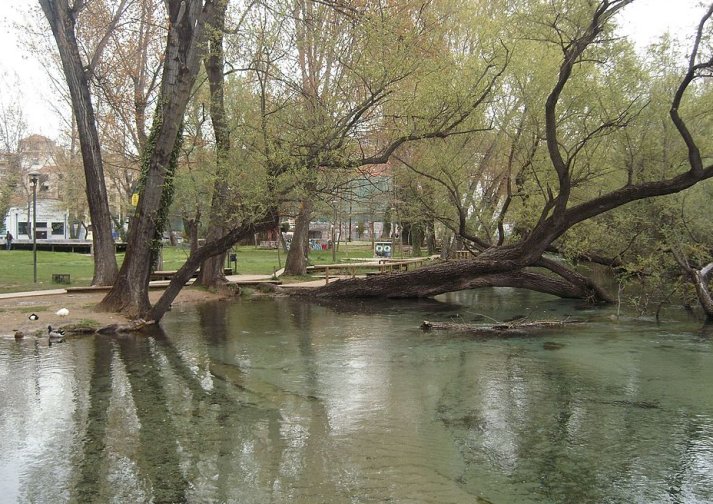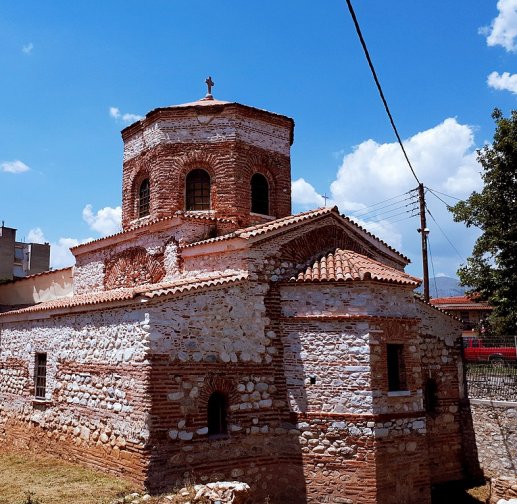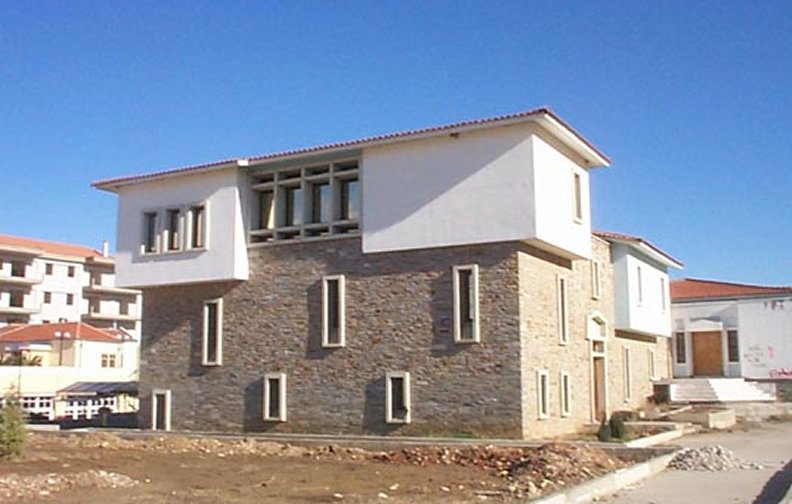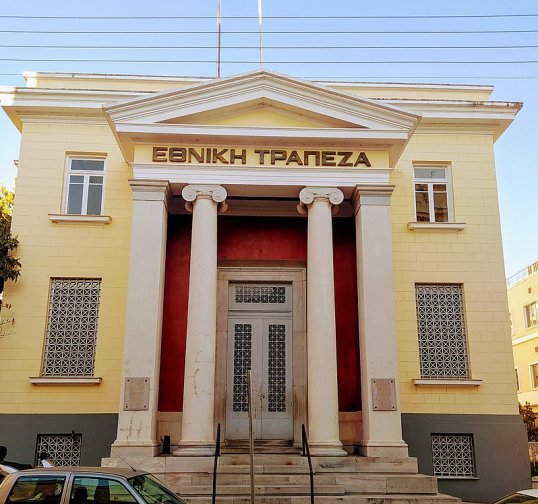DRAMA
Drama (Greek: Δράμα [ˈðrama]) is a city and municipality in Macedonia, northeastern Greece. Drama is the capital of the regional unit of Drama which is part of the East Macedonia and Thrace region. The city (pop. 55,593 in the 2021 census) is the economic center of the municipality (pop. 58,944), which in turn comprises 60 percent of the regional unit's population. The next largest communities in the municipality are Choristi (pop. 2,725), Χiropótamos (2,554), Kallífytos (1,282), Kalós Agrós (1,178), and Koudoúnia (996).
Built at the foot of mount Falakro, in a verdant area with abundant water sources, Drama has been an integral part of the Hellenic world since the classical era; under the Byzantine Empire, Drama was a fortified city with a castle and rose to great prosperity under the Komnenoi as a commercial and military junction.
 |
 |
Park of the Springs of St. Barbara Ptotected buildings on city market
During the Ottoman era, tobacco production and trade, the operation of the railway (1895) and improvement of the road network towards the port of Kavala, led to an increase in the population of the city and to the enhancement of commercial activity.
Drama hosts the "Eleftheria", cultural events in commemoration of the city's liberation, at the end of June or beginning of July, and an annual film festival in September.
Name
Archaeological finds show that in the area of the modern city there used to be an ancient Greek settlement named Dyrama (Greek: Δύραμα) or alternatively Hydrama (Greek: Ύδραμα), both meaning "rich in water". Some scholars associate Drama with the ancient Greek Drabescus (Greek: Δράβησκος). Hydrama was notable as the place of worship for many gods of classical Greek mythology, especially Apollo and Artemis. With the passage of time Dyrama became Drama. In the South Slavic languages, the city is known as Драма which is itself a transliteration of the Greek name.
History
The ancient Greeks knew the city as Hydrama or Dyrama (Ύδραμα, Δύραμα) owing to its abundant water. Later known as Drabescus, it became part of the Roman and Byzantine Empires along with the rest of Greece.
Ottoman Era
The Ottoman Empire conquered the region in 1371. In 1519 (Hijri 925) the town had 116 Muslim and 153 Christian households; it was in the jurisdiction of the beylerbey of Rumeli, Ferhad Paşa. In the 19th century, the town became centre of the Sanjak of Drama. In 1912, during the First Balkan War, Bulgarian troops took Drama from the Ottomans. In 1913, as a result of the Treaty of Bucharest following the Second Balkan War, the area became part of Greece - along with the rest of eastern Macedonia.
World War II
During World War II, in the wake of the 1941 German invasion of Greece, Bulgarian troops occupied Drama from 1941 to 1944.
On 28 September 1941, the local communist party organized a series of guerrilla attacks against the occupying forces in the villages of Drama and the surrounding villages. In response, the Bulgarian occupation forces applied harsh reprisals in Drama, Doxato and several villages like Choristi, Kyrgia, Koudounia, and Prosotsani. The following day, 29 September, the leaders of the attacks were all killed in battle or in their attempts to escape to the German occupation zone. Bulgarian troops moved into Drama to suppress the uprising and arrested all men between 18 and 45. They were reported to have executed between 360 and 500 people in Drama. According to the Bulgarian military reports, up to 1,600 Greeks were killed in the uprising and in the weeks that followed.
The massacres precipitated an exodus of Greeks from the Bulgarian to the German occupation zone in Central Macedonia. The terror and famine became so severe that the government in Athens considered plans for evacuating the entire Greek population to German-occupied Greece.
On 4 March 1943, after midnight, the Bulgarian military authorities rounded up the Jewish population across their zone of occupation in eastern Macedonia and Thrace. The 4,000-strong community, including 589 Jews from Drama, was carried by train into Bulgarian territory and assembled in tobacco warehouses, which were empty at that time of year. From there they were taken by train to the Treblinka extermination camp. None of the 589 Jews from Drama ever returned.
Culture
. Since 1978, Drama has hosted the Drama International Short Film Festival. In 1987, the festival was recognized nationally. In 1995, it added the International competition section, where short films from all over the world visit the city every year. In 1996, the festival was included in the National Cultural Network of Cities by the Greek Ministry of Culture.
Museums
Archaeological Museum
The Archaeological Museum of Drama covers human presence in the regional unit of Drama from the mid Paleolithic Period (50,000 years before present) with traces of life from Paleolithic hunts in the caves of the source of the Angitis, up to modern times (1913).
The exhibition space consists of three main halls. In the first archaeological finds from the cave of Maara give witness to the presence of nomadic hunters in the area from the mid Palaeolithic period, while other finds show us about the life of settled farmers and animal rearers from Neolithic villages and the passage of the Copper Age in the city of Drama and the village of Sitagri. The reproduction of a Neolithic house with finds which describe the activities of Neolithic man and his daily activities is the main centre of interest for visitors of all ages.
Bust of Dionysius, found in the area of Kali Vrysi. The same hall continues the journey through time to the Iron Age and later years where the main element was the worship of Dionysius at the city of Drama itself and at Kali Vrysi and other areas of the regional unit. In the second hall architectural sculptures, pottery and coins confirm that life continued in the city and throughout the whole regional unit during early Christian, Byzantine and post-Byzantine years.
The visitor is taken through modern recent history by a photographic exhibition relating to the city of Drama, the towns of the regional unit and the mountain villages. The exhibition covers the period from the beginning of the Ottoman period up to the middle of the 19th century. In the third hall which is roofed with an atrium, the visitor can admire sculptures arranged into three thematic groups. The first includes architectural sculptures dating from ancient times up to Turkish occupation. The second contains votive monuments connected with the worship of various gods in the Greco-Roman pantheon as well as local deities, with particular reference to Dionysius while the third group of sculptures focuses on funerary monuments from Hellenistic and Roman times.
Ecclesiastical Museum
The history of the Christian Church in Drama began during the Byzantine period and underwent difficult and troubled times. From the 14th century when the city was captured by the Ottomans until the 20th century with successive foreign occupations, the Greek Orthodox Church in Drama struggled without end, fed by the blood of many faithful, martyrs to the faith and to the Hellenic ideal and provided succor to its followers through difficult periods.
The collection of icons dating from Byzantine times to the 20th century forms the basic core of the museum's exhibits. The Museum of the Cathedral of Drama, founded during the reign of the honourable Bishop Dionysius 1st, is now housed in a recently restored five-storey wing of the Bishop of Drama's palace on Venizelou St. In the spacious and well-attended halls, ecclesiastical treasures of priceless spiritual and artistic value are on exhibition. The Icons of the Virgin Ηοdegetria and the Blessing Lord from the 13th century, icons from the 17th century and particularly from the 19th century decorate and sanctify the place. Moreover, the episcopal canonicals, holy vessels and their covers, many from the 19th century, relics of Chrysostomos of Drama and Smyrni, constitute the most important exhibits in the museum.
Many of the exhibits are relics brought by refugees from Asia Minor and Pontus in 1922 from the churches of their ancient homes to their new home, valuable reminders of who they were and where they came from. Organized groups of pilgrims and visitors to the city are advised to contact the office of the Diocese of Drama before visiting the museum to make arrangements.
Folklore Museum
The Folklore Museum of Drama was launched by the Lyceum Club of Greek Women in recent years. It is a project to classify and display its considerable collection of costumes and artifacts of the folk culture of Drama and the wider area. It has devoted a large part of its new, privately owned premises (three floors) to an exhibition of the collection.
 |
 |
The Spirer Tobacco Warehouse Exterior view of the Drama Library
 |
 |
Byzantine walls The Byzantine Church of Agia Sophia (10th century)
 |
 |
Old manor house Abandoned manor house
 |
 |
The Folklore Museum Drama The historic building of the National Bank (1928)